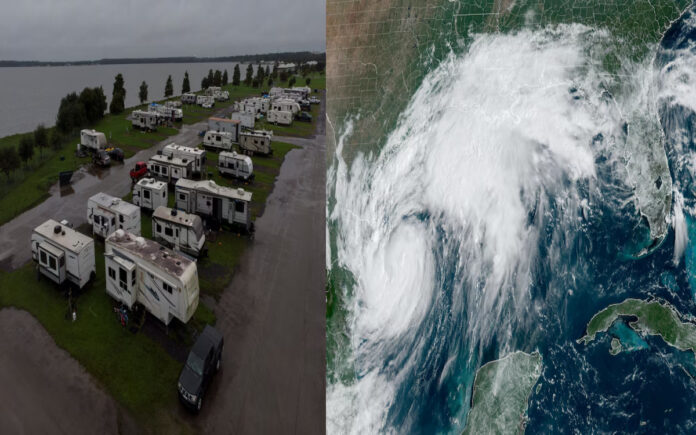Houston: Hurricane Francine, which strengthened into a Category 1 storm on Tuesday night, has prompted a significant response from both residents and energy companies in Louisiana. According to the U.S. National Hurricane Center, Francine is expected to bring life-threatening winds, torrential rains, and a storm surge of up to 10 feet (3 meters) to the Louisiana coast on Wednesday.
The hurricane’s maximum sustained winds reached 75 miles per hour (120 kph), placing it on the five-step Saffir-Simpson scale. Despite the storm’s slower development than initially predicted, it remains a serious threat to the region. The storm is currently moving away from the southern Texas coast and is forecasted to make landfall near Thibodaux, Louisiana. This trajectory poses a significant challenge to the liquefied natural gas (LNG) export facilities in the area.
In preparation, energy companies have shut in 412,070 barrels per day of oil production—about 24% of the U.S. Gulf of Mexico’s output—and evacuated staff from 130 production platforms, as reported by the U.S. Bureau of Safety and Environmental Enforcement. Additionally, approximately 494 million cubic feet per day, or 26% of Gulf natural gas production, was offline.
The Gulf region is crucial to U.S. energy production, accounting for about 15% of the nation’s oil and 2% of its natural gas. In response to the shutdowns, natural gas prices have risen by about 3%, driven by concerns over production disruptions and potential impacts on LNG plants. Conversely, global oil demand issues have overshadowed the storm’s effects, leading to a more than 4% drop in U.S. crude futures.
Oil refiners and fuel distributors along the Louisiana coast are bracing for the storm. Citgo Petroleum has implemented its hurricane plan at its Lake Charles oil refinery. Meanwhile, ports along the Texas and Louisiana coasts are experiencing varying degrees of disruption. The port of Brownsville and other smaller terminals in Texas were closed, while major ports like Houston, Galveston, Corpus Christi, Texas City, and Freeport are operating under restrictions. The Coast Guard has also imposed vessel traffic restrictions from Beaumont to Plaquemines.
Also Read | Lawmakers Review Proposal to Raise Retirement Age in Aging China
In New Orleans, preparations are underway to close the port terminal and railroad operations, with plans to resume service on Thursday after damage assessments. Ports in Houma, Morgan City, and the Louisiana Offshore Oil Port have been closed to navigation, as reported by the U.S. Coast Guard. Ports in Mississippi and Alabama, including Pascagoula, have begun storm preparations but remained open as of Tuesday. After landfall, Francine is expected to move into Mississippi on Wednesday night or Thursday.
Major oil producers, including Exxon Mobil, Shell, and Chevron, have removed offshore staff and reduced production. Pipeline operator Enbridge has also pulled employees from several U.S. Gulf of Mexico platforms. Louisiana is home to three of the country’s seven major LNG export plants. New facilities, including Sempra’s Cameron LNG, Venture Global LNG’s Calcasieu Pass LNG, and Tellurian’s Driftwood LNG, are all situated along Francine’s projected path.
Also Read | OpenAI’s ‘Strawberry’ AI Model to Launch in Two Weeks: A Leap in Reasoning Capabilities
Natural gas flows to the Cameron LNG export plant dropped to 1.3 billion cubic feet per day (bcfd) on Tuesday, down from approximately 2.2 bcfd on Monday, according to LSEG data. Freeport LNG, the second-largest LNG export plant in the U.S., has begun storm preparations at its Texas facility, although details have not been provided.



